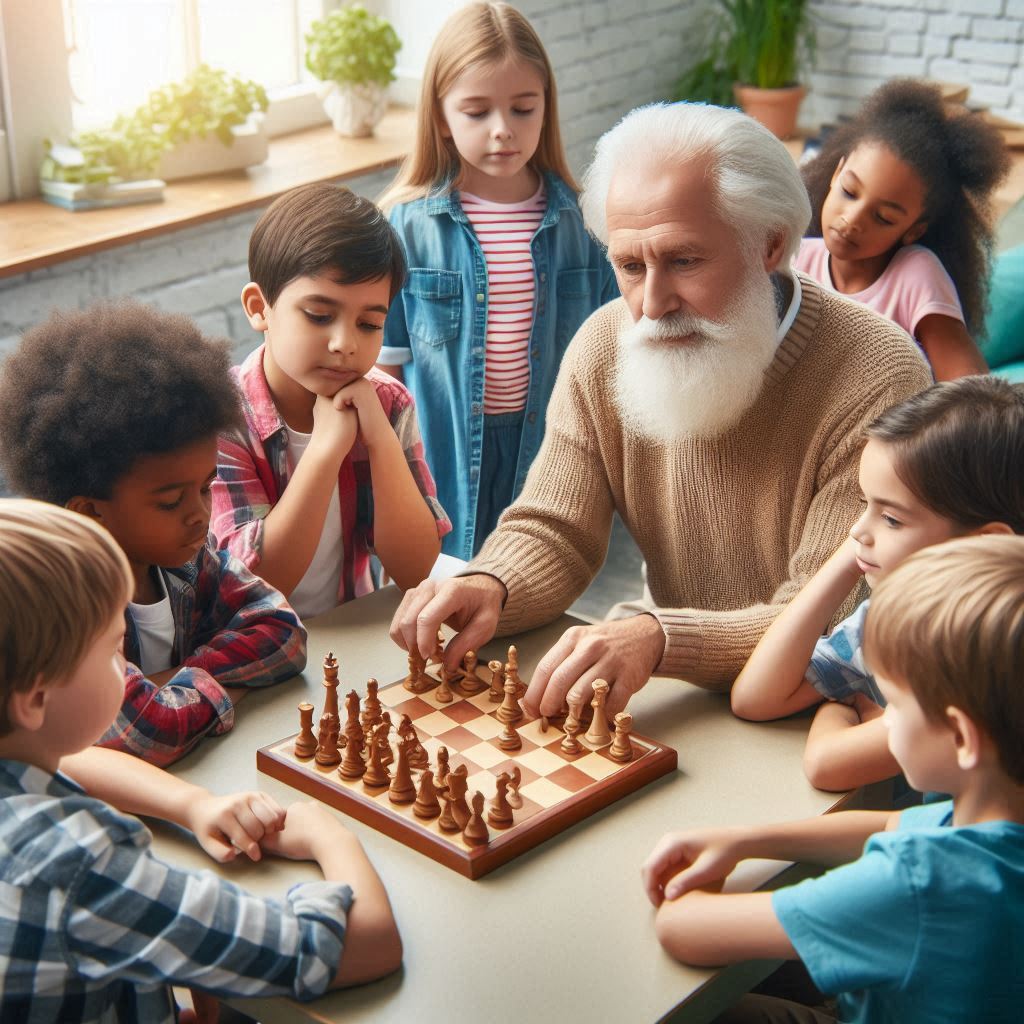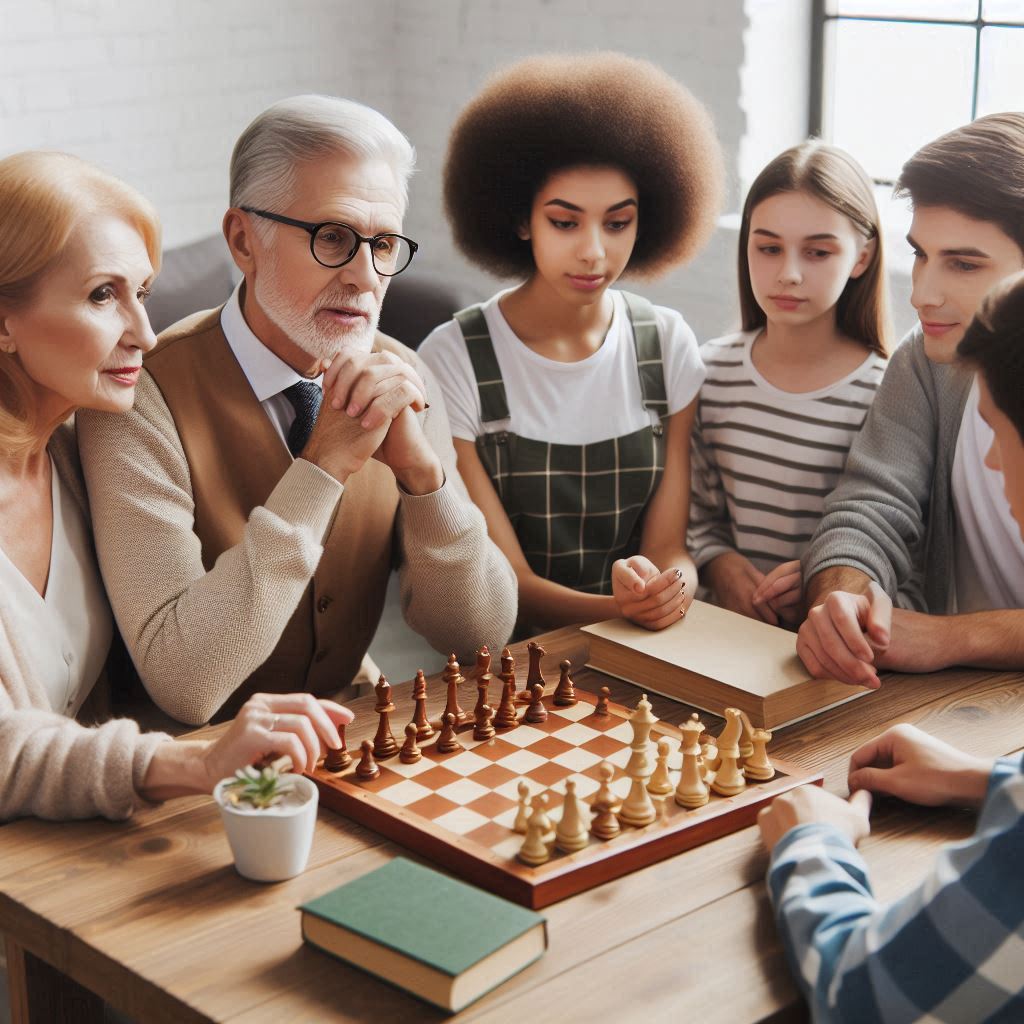Introduction
Teaching chess to children is more than just showing them how to move pieces on a board. It’s about igniting a passion for strategy, enhancing their problem-solving abilities, and nurturing patience and discipline. This guide provides parents and educators with comprehensive strategies to make learning chess a fun and enriching experience for children.
The Benefits of Teaching Chess to Children
Chess is known for its numerous cognitive benefits. From improving memory and concentration to fostering critical thinking and problem-solving skills, chess helps children develop a range of abilities that are valuable both in and out of the classroom. Moreover, chess teaches important life skills such as patience, perseverance, and strategic planning.
Getting Started with Chess
Introducing the Chessboard and Pieces
Begin by introducing the chessboard and pieces. Explain the layout of the board, the names of each piece, and their starting positions. Use a large, colorful chessboard to make it visually appealing and easier for children to understand.
Understanding the Moves
Teach the basic moves of each piece one at a time. Start with the pawns, then move on to the knights, bishops, rooks, queen, and king. Use simple language and relatable analogies to explain each piece’s movement.
Making Learning Fun and Interactive
Chess Through Stories
Children love stories. Create narratives around the chess pieces and their movements. For example, describe the knight as a horse that jumps over other pieces, or the queen as the most powerful piece on the board who can move in any direction.
Use Chess Puzzles
Incorporate chess puzzles into your lessons. These are engaging and help children apply what they’ve learned in a fun and challenging way. Start with simple puzzles and gradually increase the difficulty as their skills improve.
Interactive Chess Software and Apps
There are many interactive chess programs and apps designed for children. These tools often include tutorials, puzzles, and games that make learning chess enjoyable. Choose ones with a child-friendly interface and engaging graphics.
Building a Strong Foundation
Basic Opening Principles
Teach children the basic opening principles: control the center, develop your pieces, and ensure the safety of your king. Use simple examples to illustrate these concepts.
Understanding Check and Checkmate
Explain the concepts of check and checkmate clearly. Use visual aids and examples to show how a king can be placed in check and how to deliver checkmate.
Advanced Techniques for Young Learners
Tactics and Strategy
Once children are comfortable with the basics, introduce them to common tactics such as forks, pins, and skewers. Use diagrams and real-game examples to explain these concepts.
Endgame Principles
Teach basic endgame principles. Start with simple endgames like king and pawn versus king, and gradually introduce more complex scenarios. Emphasize the importance of promoting pawns and controlling key squares.
Encouraging Practice and Play
Play Regularly
Encourage regular practice. The more children play, the more they will improve. Set aside dedicated time for playing chess, whether it’s with family, friends, or online opponents.
Join a Chess Club
Consider enrolling your child in a chess club. This provides opportunities to play with peers, participate in tournaments, and learn from more experienced players. The social aspect of chess clubs can also make the game more enjoyable.
Fostering a Love for the Game
Celebrate Progress
Celebrate your child’s progress, no matter how small. Positive reinforcement helps build their confidence and motivates them to continue learning.
Keep It Fun
Above all, keep the experience fun. Avoid pressuring children to win and instead focus on the joy of playing and learning. Foster a positive and supportive environment where they feel free to explore and make mistakes.
FAQs
How young can children start learning chess?
Children as young as four or five can begin learning the basics of chess. At this age, keep lessons short and engaging.
What if my child finds chess too difficult?
Be patient and supportive. Break down the learning process into small, manageable steps and celebrate their progress. Use interactive tools and games to keep their interest.
Can chess improve academic performance?
Yes, studies have shown that chess can enhance cognitive abilities such as problem-solving, critical thinking, and memory, which can positively impact academic performance.
How often should children practice chess?
Regular practice is important. Aim for at least a few times a week, but ensure that practice sessions are enjoyable and not overly long.
Are there any good resources for teaching chess to children?
There are many excellent resources available, including books, online tutorials, apps, and chess clubs specifically designed for young learners.
Should I hire a chess tutor for my child?
If your child shows a strong interest in chess and wants to improve rapidly, a chess tutor can provide personalized guidance and help them advance more quickly.
Conclusion
Teaching chess to children is a rewarding endeavor that can provide lifelong benefits. By making the learning process fun, interactive, and supportive, you can help children develop a love for the game and a range of valuable skills. Start early, be patient, and most importantly, enjoy the journey of discovering chess together.



